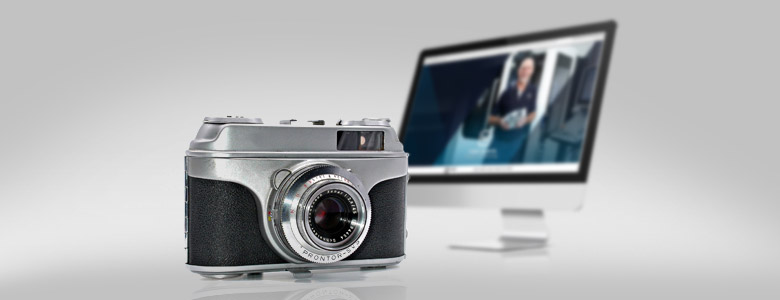
No matter where you look, photography is all around us, especially photography in web design. Often, the better the photograph, the more it doesn’t look like one, sometimes blending into more of an artistically painted canvas, rather than an image captured in real time.
While you may not notice how GOOD the good ones are – You’ll definitely notice when they’re bad.
Photography is everywhere, from television, magazines, books, calendars, right through to websites, brochures and catalogues. Whatever medium you use, the quality of your photograph and design will dictate how you’re perceived in the vital ‘first impression’ stage.
Having the right imagery is as important as the content being featured, giving your business the professional company branding and credibility.
Depending where you choose to feature photography on your site – as a main focal point on the home page, in the product features, or in the gallery – here are four ways to ensure you’re using high quality photos for your site:
1. Allow Spend in the Marketing Budget
Always, always include photography spend in your marketing budget! Investing money into photography right at the start of your project will be the best investment you make for your brand now, and into the future. Not only will you have access to your own professional bank of photos, but you’ll also save time in cleaning/touching up images.
2. Use a Professional Photographer
The first step is to hire a professional photographer who is able to take high quality images for your site, and these photos remain exclusively yours. Make sure you’ve had a look at their own site and online folio. Additionally, because this is a professional, you can guarantee they’ll be using the best equipment and directing the photo shoot to quality standards.
3. Take Your Own Photos
Alternatively, you can take your own photos, and while these will be cheaper, you’ll remove the level of expertise and direction at the shoot. If you do decide to take the photographs yourself, try to use a good quality camera (DSLR if possible) and shoot in RAW mode to make post process more flexible. You can even save and edit many shots that otherwise would’ve been ignored.
4. Make Use of the Stock Image Library
Searching through a stock image library is another way to find appropriate images for your site, however be careful with this method as there are many image libraries, and you are more likely to choose generic shots that are not well targeted. Of course, having the right imagery is only half of the job done. Think carefully about where you want to use these images on your site, what story you want it to tell, and what feeling you want it to evoke in your audience.

